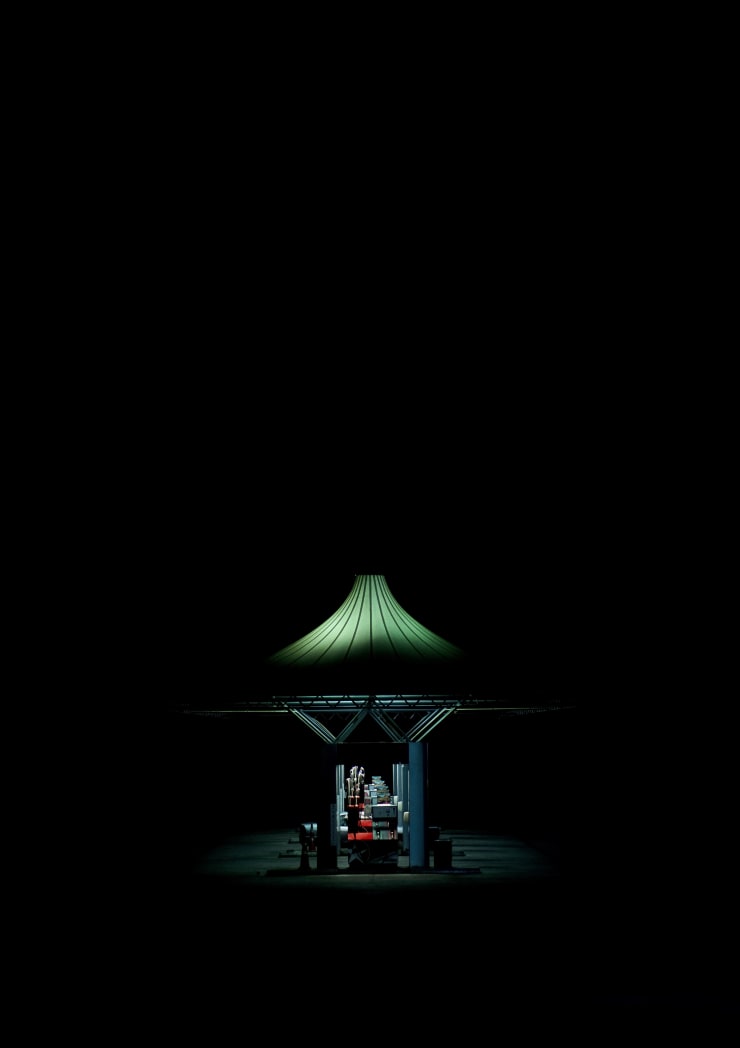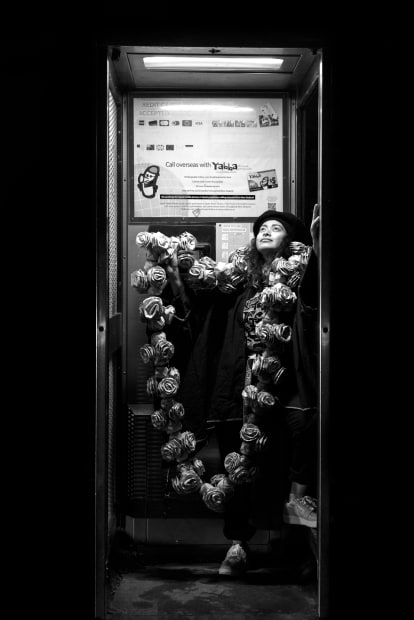-
-
James Earnest Vivieaere was a legendary New Zealand artist of Cook Island/Maori heritage who passionately pushed Contemporary Pacific Art to international heights. In 1994-95 Vivieaere curated "Bottled Ocean", an exhibition of New Zealand artists of Pacific Island descent that was shown at a number of metropolitan galleries throughout Aotearoa. Many of the then showing artists are now household names in the Pacific art lexicon and paved the way for generations of artists to come.
The online exhibition "Ocean Breeze" takes its cue from the groundbreaking exhibition and explores the conceptual legacy of Bottled Ocean through the eyes of artists working in lens-based practices today. During the founders of The Nomadic Art Gallery's time in Aotearoa, they were lucky to spend time with New Zealand artists from the Pacific Community and in their conversations they were informed by how New Zealand based Pacific artists cultural origins and traditions are a source of creative possibilities but also of doubts. Most of the artists grew up in Aotearoa but have cultural ties to the Pacific Islands: Samoa,Tonga, Niue, Fiji, Cook Islands,...
Different currents of the Pacific Ocean brought them to New Zealand where a collision between their presupposed identity and their urban experience emerges. This clash of attachment to a Pacific idea of "there" and the "territorialisation" of a New Zealand "here" offers multi-local "touch points" that create and then challenge a plethora of new twenty-first century "polycultural" diasporic identities.
“Ocean Breeze” explores the complex notions of place and identity and provides a road maps along which viewers can travel in parallel worlds and discover stories of artists floating in the ever- evolving space “between all things which defines us and makes us part of the unity that is all”. Through the exhibited photographs and commissioned audiovisual work the implicit negotiation between cultural identities are made explicit while at the same time the public interest in the colorful otherness of contemporary Pacific art through a multifaceted lens is questioned.
-
Sione Monu - Stories (2021) - Digital video - 5min48sec
Unique edition (enquiries only)
Stories (2021)
A commissioned work by Sione MonuProducing short, sharp and witty works in video, Monu’s video practice feels like an extension of his highly entertaining instagram feed. Sione’s Instagram account (@sione_has_doubts) is a major component of Sione’s practice. Monu's timeline consists of videos documenting everyday life, artistic output, and romantic endeavours and has the immediacy and energy of French New Wave cinema. It is carefully edited and framed within the context of self-expression on social media as well as performative art, connecting to other artists who identify as queer and people living in the diaspora. We feel that his video work, in contrast to his photography, is more focused on re-telling and re-claiming indiginous queerness as not only integral to Pacific Islander Culture but also as central to the well-being of their communities.
Monu takes back control of his representation, and humour remains an important feature in accomplishing this. By using humour to treat the wounds of colonial myth-making Monu is re-defining himself (and his community around him) to give new power to his art.
-
Ao’ Kakala (tryptich) (2021) - Sione Monu
Digital print on smooth cotton rag - each 59.4 x 42 cm (ed. 1 of 3) (€2400) -
Ao kakala translates to "floral clouds” and is something that his aunties and family in the diaspora would use a lot to mimic the bright colours of the natural florals they use in the islands, which they obviously didn't grow here. His photographic practice is a road to self-discovery, capturing images of himself with floral mask in partly lush/partly urbanized environments to help audiences understand the diversity and richness of tongan Culture but at the same time sketch how far away Monu is from his ancestral culture. Also these images engage with overlapping histories, deconstruct a colonial past and highlight how artists transform cultural forms in order to express both individual and community identity. In short, Monu’s work creates a new paradigm in which Queer Indigenous arts can be understood as both contemporary and traditional, past and present.
-
The End of my driveway series (2011-2012)
-
But for me The End of My Driveway remains the clincher. The walk to school is a liminal zone. My pulse quickens when I look at the teenager in Neighbour, head down, shoulders slightly slumped, is that a scowl or am I projecting discomfort? What about the young woman in Stocking, a bit of skin showing through the tear on her knee? I homed in on potential socio-economic clues – a water bottle, a pie and coke - as though I’m some kind of sociologist gathering hard stats, but really, I’m just looking at the students passing Woodside Ave (no exit.)
- Excerpt from the Essay by Megan Dunn for PhotoForum, July 2019
-
In her series The End of My Driveway, 2011–2012 where Edith photographed students from the curb of her own home, walking to and from school, we see the intermediary zone between school and home. At first glance this is an ordinary series of events, but Edith indicates to us that this is in fact a time where students are by themselves, for a few moments they are in charge, free to walk anywhere they choose yet fully aware of the consequences of the actions.
-
 Edith Amituanai - Isaac on the driveway before school (2009)
Edith Amituanai - Isaac on the driveway before school (2009)Edith Amituanai - Isaac on the driveway before school (2009)
pigment inkjet print - 85 x 105.2 cm (edition 1 of 3)Amituanai works narrates the daily life of the Oceanian diaspora community in the middle of urban society where they built their new life. Her intuitive documentary-style photographs are socially constructed narratives of people she knows in settings the photographer and the subject feel at “home” in. A visual observation of her own hybrid identity is (re)defined by the values and lives of (extended) family and other Pacifika communities. Isaac is Amituanai’s nephew and their blood relationship becomes obvious when spending time with the photograph. The viewer is intimately watching from the house how Isaac, himself going to school, captivates you with his charm and innocence. Quintessentially the photograph of Isaac indicates how the socio-culturally charged concept of home migrates from one place to another and from one generation to another.
In contrast to the beautiful day and thus soft colors of "Isaac with a Dandelion on White Sunday" (taken a few years after), Isaac on the driveway before school is grey and moody. It playfully reveals the reluctance with which we sometimes went to school, especially on a darker day. On a deeper level the freezing of a moment, the comfortable idea of home to come back to, blurry background, the surrounding stillness of suburban life and semi-static composure of Isaac allegorically capture the essence of life: seize the day. Seizing the day without getting carried away by external, empty self-projected promises. Everything happens in front of our eyes but only when we open them, we will see the magic slowly unraveling.
-
In the darkness we seek the light series
-
A study of the change night makes to the spaces and landscapes we occupy in South Auckland. Both of the locations these images represent serve as places of connection and transportation, the pedestrian crossing for people and the fuel station for vehicles and their occupants. From a personal perspective they were also places I would pass regularly on my travels, more often than not during early hours of the morning. I would always marvel at how they would take on a different context without the steady flow of human activity. They were beacons of light in the dark. These images became key to what would develop to become my practice of photographing nocturnal landscapes in South Auckland.- Raymond Sagalopulutele
-

-
-
Raymond Sagalopulutele - Talanoa (series of 10 photographs) (2021)
printed on Hahnemuhle paper - each 35 x 23.3 cm (€4500)A visual short story about the lengths I would go to get out of evening prayers as a kid in the 1980s. The phone ringing was one of my favourite excuses to remove myself from participating.
Each call was a chance to escape the cramp of sitting cross legged and the occasional pinch from our mum because my brother made me giggle when we were supposed to be deep in thought and consideration. I love using this little phone booth as a makeshift studio and occasional narrative device.
-
Ocean Breeze: Edith Amituanai, Sione Tuivailala Monu & Raymond Sagapolutele
Past viewing_room











